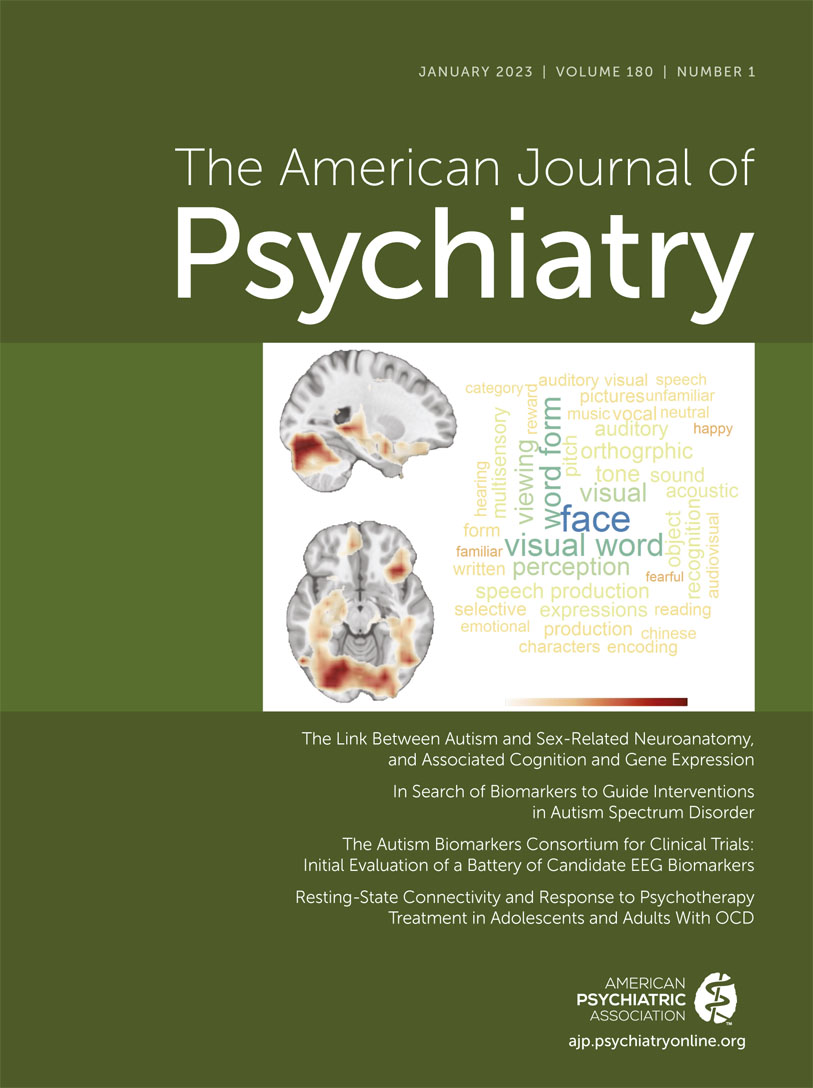The Link Between Autism and Sex-Related Neuroanatomy, and Associated Cognition and Gene Expression
Abstract
Objective:
The male preponderance in prevalence of autism is among the most pronounced sex ratios across neurodevelopmental conditions. The authors sought to elucidate the relationship between autism and typical sex-differential neuroanatomy, cognition, and related gene expression.
Methods:
Using a novel deep learning framework trained to predict biological sex based on T1-weighted structural brain images, the authors compared sex prediction model performance across neurotypical and autistic males and females. Multiple large-scale data sets comprising T1-weighted MRI data were employed at four stages of the analysis pipeline: 1) pretraining, with the UK Biobank sample (>10,000 individuals); 2) transfer learning and validation, with the ABIDE data sets (1,412 individuals, 5–56 years of age); 3) test and discovery, with the EU-AIMS/AIMS-2-TRIALS LEAP data set (681 individuals, 6–30 years of age); and 4) specificity, with the NeuroIMAGE and ADHD200 data sets (887 individuals, 7–26 years of age).
Results:
Across both ABIDE and LEAP, features positively predictive of neurotypical males were on average significantly more predictive of autistic males (ABIDE: Cohen’s d=0.48; LEAP: Cohen’s d=1.34). Features positively predictive of neurotypical females were on average significantly less predictive of autistic females (ABIDE: Cohen’s d=1.25; LEAP: Cohen’s d=1.29). These differences in sex prediction accuracy in autism were not observed in individuals with ADHD. In autistic females, the male-shifted neurophenotype was further associated with poorer social sensitivity and emotional face processing while also associated with gene expression patterns of midgestational cell types.
Conclusions:
The results demonstrate an increased resemblance in both autistic male and female individuals’ neuroanatomy with male-characteristic patterns associated with typically sex-differential social cognitive features and related gene expression patterns. The findings hold promise for future research aimed at refining the quest for biological mechanisms underpinning the etiology of autism.



